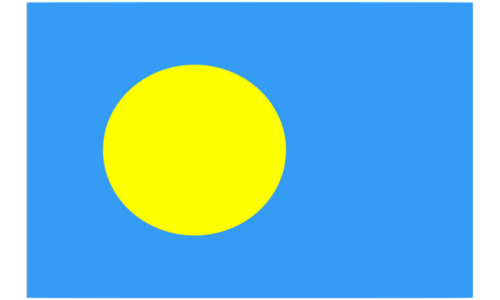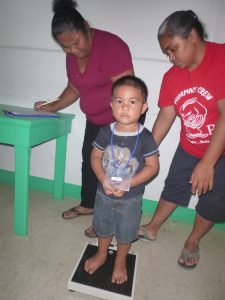
REPUBLIC OF PALAU
Population
Total 21,779 (2023 est.)
Age Structure: 0-14 years: 17.49%; 15-64 years: 71.82%, 65 years and over: 10.69%
Population by gender: male 51.48%, female 48.52% (2023 est.)
Urban population: 82.4% of total population (2023 est.)
Rate of urbanization: 1.59% annual rate of change (2020-2025 est.)
Total fertility rate: 1.7 children born/woman (2023 est.)
Diabetes rate: Prevalence (age-adjusted 20-79 years) – 17% (2021); proportion of people with undiagnosed diabetes – 45.4% (2021))
Drinking water source: improved – 99.7% of population, unimproved – 0.3% of population (2020 est.)
Sanitation facility access: improved – 99.6% of population, unimproved – 0.4% of population (2020 est.)
Ethnicity: Palauan (Micronesian with Malayan and Melanesian admixtures) 73%, Carolinian 2%, Asian 21.7%, Caucasian 1.2%, other 2.1% (2015 est.)
Languages : Palauan (official on most islands) 65.2%, other Micronesian 1.9%, English (official) 19.1%, Filipino 9.9%, Chinese 1.2%, other 2.8% (2015 est.) Note: Sonsoralese is official in Sonsoral; Tobian is official in Tobi; Angaur and Japanese are official in Angaur
Literacy: 96.6% (2015 est.)
Economy
Real GDP: $248.468 million (2021 est. in 2017 dollars)
GDP per capita: $13,800 (2021 est. in 2017 dollars)
Labor force by occupation: agriculture (1.2%), industry (12.4%), services (86.4%) (2016 est.)
GDP-composition by sector of origin: agriculture (3%), industry (19%), services (78%) (2016 est.)
Unemployment rate: 1.7% (2015 est.)
Poverty rate: 24.9% (2006 est.)
WIC: there is no WIC program in Palau
Agricultural Product: coconuts, cassava (manioc, tapioca), sweet potatoes; fish, pigs, chickens, eggs, bananas, papaya, breadfruit, calamansi, soursop, Polynesian chestnuts, Polynesian almonds, mangoes, taro, guava, beans, cucumbers, squash/pumpkins (various), eggplant, green onions, kangkong (watercress), cabbages (various), radishes, betel nuts, melons, peppers, noni, okra
Industries: tourism, fishing, subsistence agriculture
Exports: $12.07 million (2021 est.); fish, computers, broadcasting equipment, office machinery/parts, scrap vessels (2019)
Imports: $180.38 million (2021 est.); refined petroleum, fish, cars, broadcasting equipment, modeling instruments (2019)
Transportation
Airports (3 (1 with paved runways, 2 with unpaved runways)), Roadways (125 km with 89 km paved and 36 km unpaved), Merchant marine (304 with 29 bulk carrier, 6 container ship, 137 general cargo, 43 oil tanker, and 89 other, Ports and terminals (major seaport at Koror (2022 est.))
Geography
Land: 459 sq km
Natural Resource: forests, minerals (especially gold), marine products, deep-seabed minerals
Land Use: agricultural land (10.8%) – arable land (2.2%), permanent crops (4.3%), permanent pasture (4.3%); forest (87.6%); other (1.6%) (2018 est.)
Climate: tropical; hot and humid; wet season May to November
Environmental-current issue: inadequate facilities for disposal of solid waste; threats to the marine ecosystem from sand and coral dredging, illegal and destructive fishing practices, and overfishing; climate change contributes to rising sea level and coral bleaching; drought

